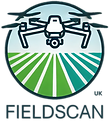Irrigation Planning and Leak Detection
Step 1: Pre-Flight Planning (max 50 ha/day/drone)
We begin by assessing your location and defining the survey area using satellite imagery and field boundaries.
Flight paths are optimised for efficient coverage and data accuracy depending on the survey type

Step 2: Drone Survey Execution
-
Flight Speed: ~7 mph
-
Flight Height: 60 meters
-
Coverage: ~0.1 hectares per minute
-
Details: Focuses on thermal and multispectral imaging to detect water stress or leaks. Balance between speed and resolution is key.
Step 3: Data Upload & Processing
The larger the Ha area, the longer the upload and data processing takes. Whilst the process is largely automated it does require our judgment at certain key stages. These are typical times for upload and processing a 100 Ha: -
-
(5-6 hours) Upload thermal and multispectral imagery to generate a Thermal Orthomosaic.
-
(1-2 hours) Analyse temperature variations to detect leaks or inefficient irrigation zones using the Thermal Index tool.
-
(1 hour) Export reports for irrigation optimisation.
Step 4: Report Generation
Output/Report
-
Thermal Orthomosaic Map: High-resolution thermal imagery to identify temperature anomalies.
-
Moisture Stress Maps: Areas experiencing water stress or over-irrigation.
-
Zone Maps: Classified regions indicating potential irrigation issues.
File Type Options
-
Thermal Maps & Moisture Stress Zones: GeoTIFF (.tif), PNG, PDF
-
Zonation Maps: SHP, CSV, PDF
